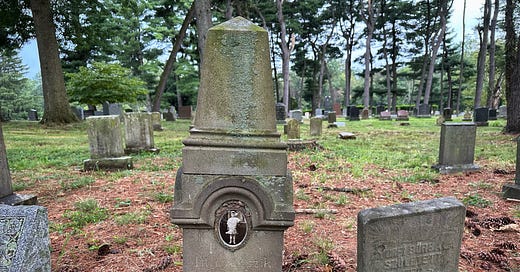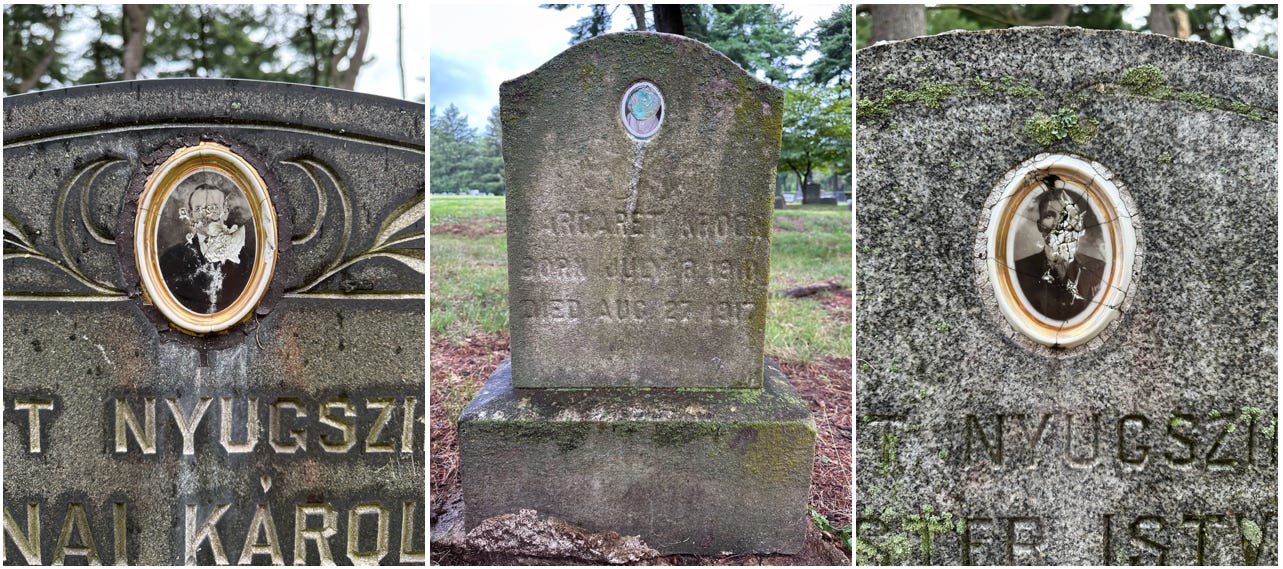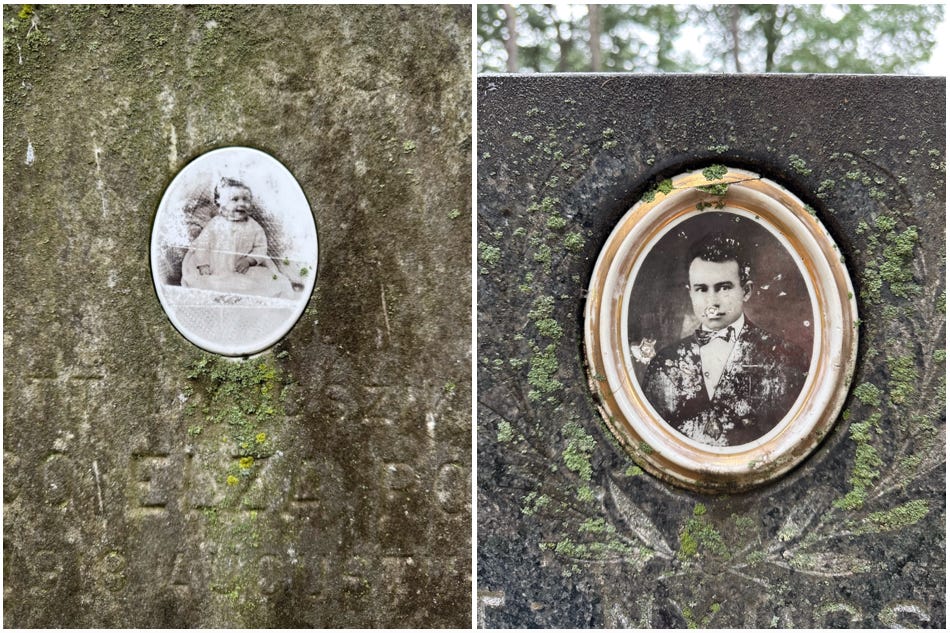The History of Headstone Photo Ceramics
Invented in 1854, the technique was popularized in the late 1800s.
TW: images in this post touch upon infant and child mortality.
There’s something both unsettling and intriguing about standing atop a grave and looking its interred in the eyes. Thanks to photo ceramics, this experience became a reality starting in 1854, and the treatment is still used today.
The ceramics were made by firing a photograph transfer onto porcelain or enamel—its inventors were French photographers Bulot and Cattin, so the technique first became popular in Europe. It caught on in the United States starting around 1870—genealogist Gena Philibert-Ortega found early newspaper advertisements and much more in her incredibly detailed article about photo ceramics.
This option offered more a affordable way to memorialize the deceased, as opposed to pricey traditional sculptures and carvings of likenesses. Over time, the portraits went from black and white to color, and mainstream catalogs even began selling the headstone add-ons, which were attached with cement.
Though they were pitched as nearly indestructible, many photo ceramics from the late 1800s and early 1900s have cracked and chipped, giving the images an even more haunting effect. Some have fallen off or been stolen, leaving a ghostly hole in their wake.
This is a slight twist on the trend, and it’s the oldest photograph on a headstone in New Jersey. Hester Warne’s image dates to 1857; its negative was printed on glass instead of porcelain or enamel, and it’s positioned in a beautiful ceramic frame. Her gaze is…penetrating, no?
Taking the practice even one step further, photo ceramics developed alongside the rise of post-mortem photography (if you haven’t seen The Others, it’s an excellent and very spooky introduction to the custom), and the two were sometimes combined. It’s not unusual to stumble upon a photo ceramic featuring the interred in their coffin, though I have yet to find one in my New Jersey and Pennsylvania wanderings.
You best believe I’m keeping an eye out, though—just as the stones very much have their eyes on me.









Amazing! I've seen my fair share of these porcelain grave photos, but had no idea they dated back to mid nineteenth century. Very cool!